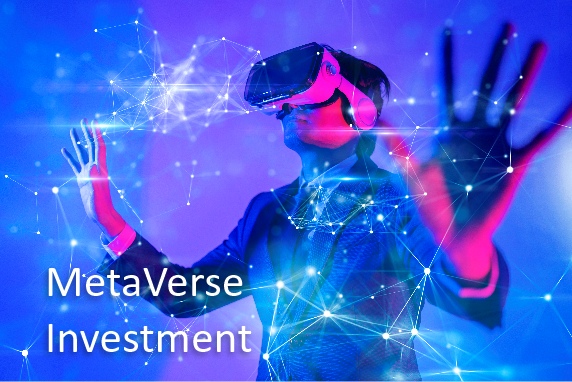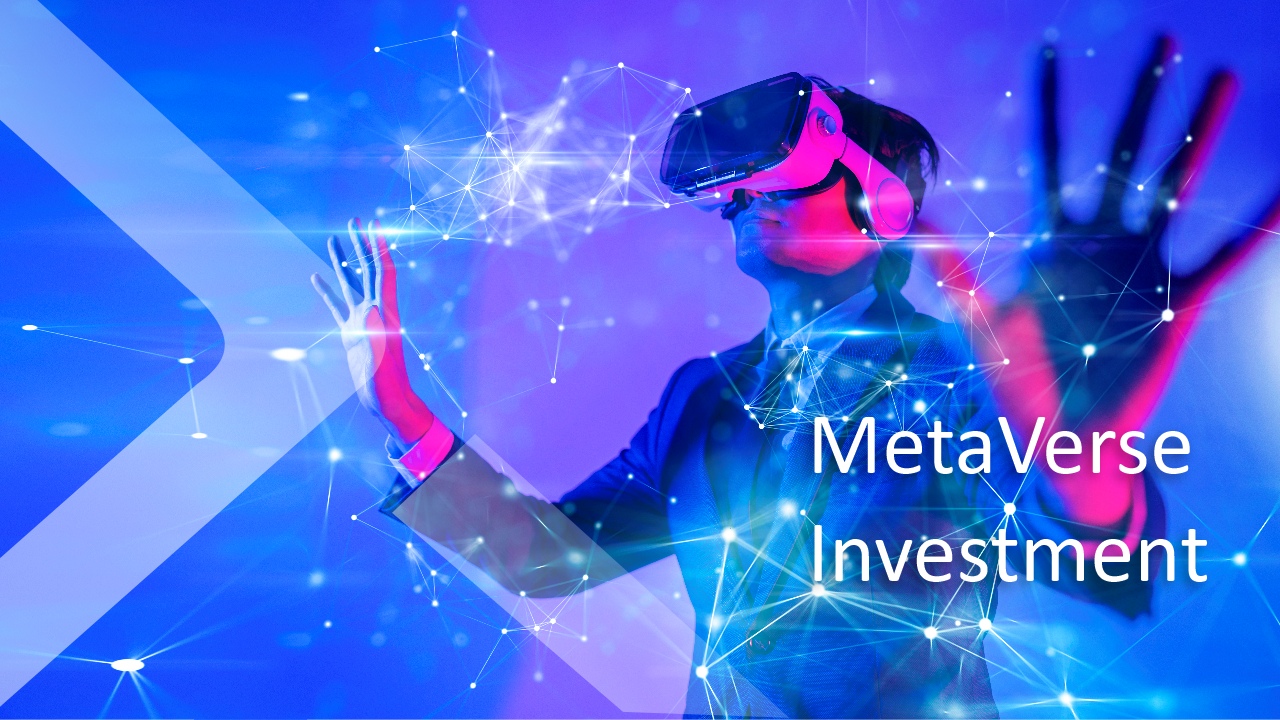Early Stage Metaverse Investments Can Earn You Remarkable Returns
By Marcie D. Terman Panxora COO
If you could time travel to 1970 and try to explain Web 2.0 (web2) to your relatives, they would struggle to grasp concepts we now take for granted. Things like earning a college degree online, multiplayer gaming, working remotely, or live streaming a concert. In the same way, most of us today probably struggle to understand the true potential of The Metaverse. But what is The Metaverse?
The Metaverse, Metaverses, & Metaverse-Adjacent Platforms?
People use the terms The Metaverse, metaverses, and metaverse-adjacent platforms interchangeably. Let us make some distinctions for clarity purposes.
The Metaverse
The Metaverse is the enormous, blockchain-powered, immersive, integrated 3D virtual world where you can live through your avatar. Users can immerse themselves in virtual worlds using virtual reality (VR) headsets and gloves. VR provides you with the point-of-view (POV) experience of your avatar. Augmented reality (AR) headsets and phone apps support a non-immersive but highly interactive experience where three-dimensional visuals are projected into the real world.
A critical characteristic of The Metaverse is its open interoperability meaning it is not privately owned, and it interacts with other platforms. You can meet colleagues, work, exercise, enjoy entertainment, learn, shop, and design complex machines there.
Metaverses
Metaverses refer to the blockchain-powered virtual worlds possessing either open interoperability or restrictions. Restrictions tend to apply to corporate or privately owned metaverses. Meta’s Horizon World is a corporate-owned metaverse, while Decentraland is more member-centric since members can vote on policies.
Blockchain technology provides for blockchain-powered metaverses currently restricted or lacking interoperability to become interoperable. Then, they can seamlessly integrate with other metaverses in the future.
Metaverse Adjacent Platforms
Some virtual worlds like Roblox have many metaverse-like characteristics; they are types of metaverses in their own right. The main technicality that places these virtual worlds into the metaverse-adjacent category is, they are not blockchain-powered. Without a blockchain, it is much more difficult to achieve interoperability, integration with other platforms, and generate NFTs, among other factors.
Doing Business in the Metaverse
The blockchain is essential for The Metaverse to operate. It facilitates decentralized finance (DeFi), the exchange of value outside of the established financial or banking system.
Every economy needs a form of currency. You can buy tokens using fiat money or cryptocurrencies to spend in different metaverses. Additionally, you can spend the cryptocurrencies accepted in that metaverse.
DeFi makes it easy to buy and sell in The Metaverse. Cryptocurrencies, and other fungible or divisible tokens that circumvent the banking system, make transactions spontaneous, transparent, cheaper, and secure. Blockchain also enables the use of non-fungible tokens (NFTs). NFTs are indivisible cryptographic tokens encoded with unique ownership details of virtual assets stored on a digital ledger.
No two NFTs are the same, and they can easily be distinguished. These characteristics appeal to NFT producers and consumers as they are impossible to duplicate, and it is pointless to generate fakes.
Metaverse Potential
There is no doubt that the Metaverse will revolutionize our way of life. Virtual realms are already a way of life for Gen Alpha and Gen Z. The COVID-19 pandemic underscored the importance of being physically distant but still socially close, but the biggest game-changer is Web3.
Web3 is still in development. It will also be based on blockchain technology and be fully decentralized, so there won’t be disproportionate internet control by any country or entity. Decentralization will widen the spread of potential consumers as more people from the Developing World harness web3‘s power.
Web3 will be fast based on 5G technology and 6G still under development, but shifting from coding to machine learning and artificial intelligence will be web3’s fundamental impact. Artificial Intelligence (AI) in web3 will help to level the digital playing field. Don’t be surprised if Baby Boomers can enjoy virtual experiences just as much as Gen Alpha since machines will adjust to users‘ needs rather than users needing to understand the technology.
It is easy to predict that some individuals will spend more waking hours in metaverses than in the real world, driving demand for NFT digital assets like art, land, clothing, accessories, and entertainment.
Metaverse Investment Opportunities
If cryptocurrencies are anything to go by, there is no doubting the massive potential for significant returns on digital investments backed by decentralized and transparent blockchain technology. Blockchain reduces risk, but metaverses like the cryptocurrency market, are unregulated and many variables exist.
The high-risk element means risk-averse investors should exercise caution in investing in the metaverse. Investing in the metaverse indirectly by owning established companies exposed to the metaverse economy reduces your financial risk.
The riskiest investments include direct investment in metaverse NFT assets like art, land, and digital assets. Such investments could offer exponential returns. A small punt into holding these items could earn you millions in the future as some crypto billionaires can tell you.
The best approach is to diversify your metaverse investments to limit risk and maximize returns.
Indirect Investment
Metaverse stocks
Investing in established publicly traded companies with vested metaverse interests will reduce your portfolio’s volatility. The list includes:
Meta Platforms Inc (NASDAQ: FB)
Meta CEO Mark Zuckerberg announced the rebranding of Facebook Inc. to become Meta Platforms Inc in October. Meta has subsequently launched Horizon Worlds, its VR world navigable using the company’s Oculus Quest 2 VR headset, a Christmas gift bestseller.
The Horizon Worlds metaverse is already a thriving community whose members have built thousands of worlds for other users to explore.
Microsoft (NASDAQ: MSFT)
Microsoft is initially targeting collaboration tools through Mesh for Microsoft Teams. Mesh enables 3D holoportation of lifelike, photorealistic avatars and 3D models into virtual rooms and spaces.
The HoloLens 2 headset by Microsoft, enables users to view other avatars and content generated in the Mesh Microsoft team metaverse from their avatar’s POV, creating a fully immersive experience.
Microsoft’s technology makes online meetings and collaborations feel almost physical and personal. Users can get a hands-on feel of interacting with new products and services. Mesh for Microsoft Teams gives us a peek into what future virtual interactions will look like.
Roblox (NYSE: RBLX)
Gamers on the Roblox metaverse platform can build virtual worlds that other users can explore. Created in 2006, Roblox saw a 35% increase in daily active users totaling 49.4 million.
Roblox gamers benefit from the work of 9.5 million independent developers and 24 million customized digital experiences. The platform host 49.4 million daily active users.
Boeing (NYSE: BA)
Aircraft manufacturer Boeing uses The Metaverse to drive production capabilities. The company is building a digital environment where the various global components can synergize seamlessly.
The Metaverse Index (MVI) and Metaverse ETFs
You can use Ethereum (ETH) coin to purchase MVI units currently valued at $194. The MVI index by Index Coop operates just like regular stock indexes.
It is a compilation of crypto coins that are either already engaged in the metaverse plus those transitioning there.
Several metaverse Electronically Traded Funds (ETFs) target metaverse-exposed companies. Roundhill Ball Metaverse ETF (NYSEArca: META), launched in June 2021, is the first such ETF consisting of over 40 companies.
Direct Metaverse Investment
Art NFTs
Modern art’s subjective value makes it a risky investment. But one man’s junk is another man’s masterpiece. NFT art is probably the hottest form of modern art. Digital artist Mike Winkleman, better known as Beeple, created the second most (“Everdays: The First 5000 Days”- $69 million) and third most (“Human One” – $28.9 million) expensive NFT artworks sold in 2021. Buying art assets makes sense since they tend to appreciate over time. The novelty of current digital art created at the metaverse’s infancy will probably make them even more valuable to future art collectors.
Digital Real Estate and Virtual Assets
Digital real estate is another hot commodity, with several startups involved in the space. The two most popular metaverses where you can buy land and other virtual assets exist on the Ethereum blockchain. They are; Decentraland and Sandbox.
Decentraland
Decentraland markets itself as the first-ever virtual world owned by its users. You can trade digital real estate, interact, explore, and play games.
You purchase property in the form of LAND (NFTs). LAND tokens act like certificates of ownership representing your digital real estate. You will need MANA cryptocurrency to buy LAND tokens in Decentraland or purchase any virtual goods or services in that metaverse.
MANA owners have voting rights on land auctions, policy updates, and new development subsidies.
Exciting times lie ahead for Decentraland. The leadership intends to make the platform interoperable with at least four other metaverses.
The Sandbox
The Sandbox virtual world has four types of tokens: SAND (the local cryptocurrency), ASSETS (user-created virtual NFT assets), GAMES (user-created games), and LAND (Each virtual plot of land).
Like MANA holders in Decentraland, SAND holders have voting rights in The Sandbox. The Sandbox targets accessibility on smart devices by December 2022 with penetration into the gaming console market the following year.
Another target is to have 5,000 games accessible to users by 2024, but the most ambitious goal is the creation of in-world jobs where people will work as they would in the real world.
NFT Market Places
Popular marketplaces to browse and purchase NFTs without joining a metaverse world include OpenSea and Mintable.
OpenSea is the most popular platform. It supports 150 cryptocurrencies and has a smooth user experience.
Mark Cuban-backed mintable is popular among celebrities, artists, and creatives who want to mint their work for sale as a digital asset.
The Bottom Line
The Metaverse is the new frontier for investors. As with any new opportunity, there are high levels of uncertainty and financial risks. Fortune favors the brave and high risk signals the potential for high rewards similar to early-stage BTC or ETH investors. There is no doubt that the coming migration to The Metaverse will create massive returns on investment for those who make the best moves now.
Investing in stocks, indexes, or ETFs of established companies with metaverse interests are the safest options, but returns could be limited. The best option is a diversified approach spreading your risk across different metaverse investments with varying risk profiles.
There is much to learn about Metaverse investing and its potential and web3 will provide it with a massive boost. Getting in now will give you better prices that will translate to better profit margins when your investments appreciate compared to waiting for the dust of uncertainty to settle before buying.
Do your research, speak to your financial advisor about your investment strategy, and put your money to work in The Metaverse.
Panxora is currently incubating a metaverse/social network/crypto project which will shortly be looking for investment partners. Email me to find out further information.

